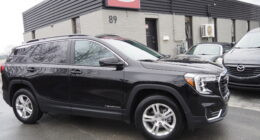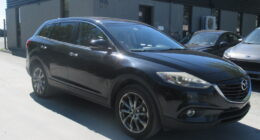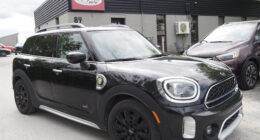Winter Driving in Canada: Everything You Need To Know

Winter driving in Canada is not a task for the faint-hearted. Especially immigrants who are unfamiliar with its icy roads, and temperatures drift down to around -10C to -20C. Awesome, right? On the other hand, things become different when you’re cruising along a dark highway and the temperature is around -250C, with no mobile service. Any mistake on a road like this would be deadly.
All Provinces thus provide strict rules to rein in deaths from situations like this during winter. While Canadian residents already know what to do during winter, new immigrants will do well to keep the tips below in mind.
Winter tires
Yearly, the provinces of British Columbia and Quebec deems winter tires compulsory from October 1 to March 31 and December 15 to March 15 respectively. Although other provinces do not make their residents follow this rule for winter driving in Canada, they still permit it. For example, Ontario permits winter tires from October 1 to April 30.
British Columbia places advisories/road signs on highways or areas where the road condition changes rapidly. Another usual place is when you approach mountain passes at a high altitude.
Whenever temperatures drop below 70C, all provinces recommend drivers to switch to winter tires; though not compulsory. The reason for this is that in cold weather, regular tires lose their friction and become hard while winter tires allows more control, all thanks to its big thread. However, once weather improves and there is more warmth, it is important to take them off to prevent damage to their soft rubbers.
Soft rubber is more prone to damage when roads are warm. Furthermore, ensure that your tire pressures are at appropriate levels (including spare tires).
Heaters for Winter Driving in Canada
More often, Canadians having to plug in their car during winter comes as a surprise to European immigrants. The reason they do this is to keep the crucial parts of the engine in good condition in the country’s cold climate. Canada’s climate is so cold that you would need to plug your car to a heater; that is if you still want it to work.
In some parts where winter temperature stay above freezing like Vancouverite, plugging to a heater isn’t necessary. However, in places where temperatures go below -150C, plugging to a heater becomes a daily routine for car owners.
You see, in cold weather, the oil in your car becomes thicker than usual. This lessens its flow into the engine parts where it is needed to lubricate parts, thereby reducing friction. And we know that without friction, these parts are vulnerable to wear and tear. To avoid this, Block Heaters come in handy.
Keeping the oil in your car and the engine warm is the duty of Block Heaters. Always have them turned on about two to four hours before setting out to drive, planning based on how cold the weather is.
People who travel to work should make preparations for this by getting an automated timer. Waking up at 4:30 am just to put on a heater before setting out for work at 7 am doesn’t sound great, does it? Spare yourself the stress by spending $10 to $20 on an automated timer.
Essential tools for Winter Driving in Canada
For winter driving in Canada, the essential tools you need to have in your car are of two types which are:
- Things you will need (daily).
- Things you hope to never need.
Imagine using your hands to clear several inches of snow from your windshield? That is a great way to start the morning right?
Putting in things like ice scrapers, snow brushes and the likes will go a long way during winter because these are things you will need daily. Furthermore, it’s of great importance to plan on having to spend a night or two in your car when temperature is below -400C. You could happen to be in a dire situation and be out of mobile service so that makes planning for emergencies important. Your car should be filled with:
- First aid kit
- Waterproof matches
- Torches and spare batteries.
- Non-perishable foods e.g. granola, chocolate, water, cereal.
- Shovel (one with a small handle).
- Printed road maps.
- Small candles and a tin to store and carry them.
- Heat packs
- Booster cables
- Sunglasses
- Bag of grit or kitty litter
- WD 40 or De-icer to defrost locks. Locks sometimes freeze at night when temperature dips due to water entering the keyhole during the day.
Insurance
One of the ways to increase your chances for insurance if you have a collision during winter is by abiding to the rules of your province. For instance, on the ICBC website, the British Columbia’s local insurance authority lies a notice that says that if you are in a crash where winter tires could have helped but you failed to have them on, you are at fault. This means that your claim goes out of the window.
Good Driving Practice
The tips below are general tips for anyone in winter driving in Canada should follow:
- Make sure your gas tank is full at all times.
- Do not use cruise control during winter.
- Make research on what you should do specifically to your car, if you are ever in a skid and prepare for it.
- Make room for additional time. Google maps are cool but unreliable in these times.
- Always check road conditions in advance. In a very bad weather, don’t risk your life or take chances on dangerous routes.
Let the conditions dictate how you drive. Trying to keep up with the speed limit when you know you should be driving slower than that is a recipe for disaster.
If you would like to get in touch with our team, on the best ways to get a car and tips on  how to keep it going as we progress into winter, fill in the form below.
Looking For Quick & Easy Financing?
We know how to find the best vehicle for your situation, and have you leave the lot with a smile on your face.
Apply now!


